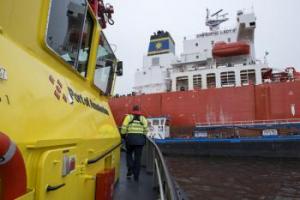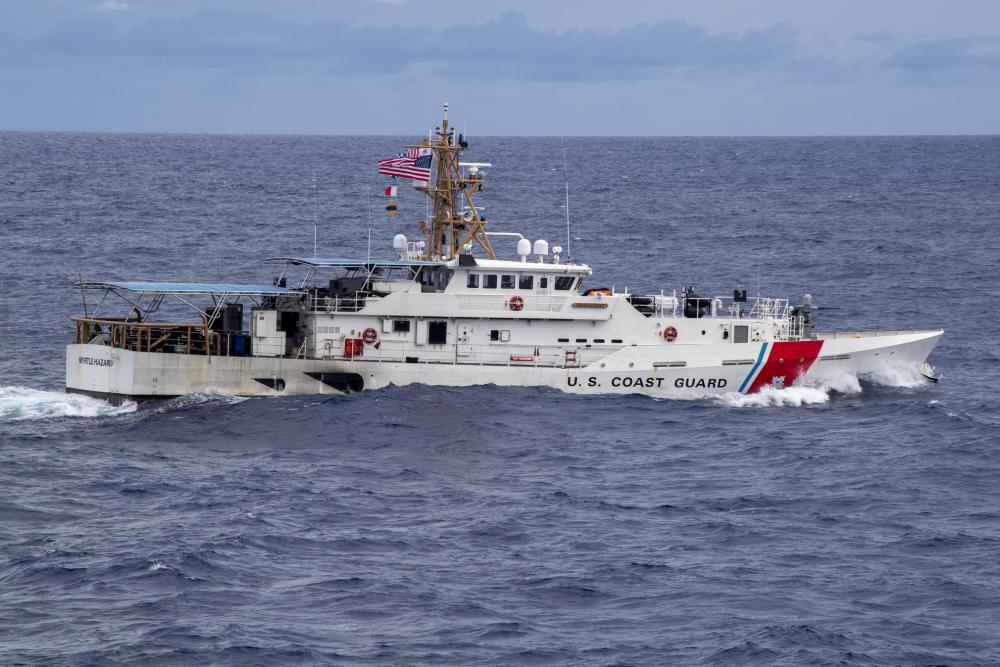Harbour Master
Harbour Masters
Worldwide there are approximately 3,000 merchant ports and the work of the Harbour Master can vary widely from country to country and from port to port even within the same country.



In a bid to strengthen relationships and interoperability, the US Coast Guard conducted a multilateral search and rescue drill alongside longtime partners from the UK, Japan, and the west Pacific Republic of Palau in late July. This was reported by USCG Forces Micronesia from Santa Rita, Guam, early in August.
In the words of Lieutenant Commander Field Cassiano, Coast Guard liaison officer to the Compact of Free Association States: ‘We thrive on these opportunities, and we all came away with a deepened appreciation for the work of our respective agencies.
‘Anyone who spends time in the Pacific is no stranger to the region's vast distances and limited resources. Evolutions like this provide invaluable face-to-face interaction and enable us to work through challenges before an incident or crisis.’
Such events range from something akin to the search for Amelia Earhart to the far more common activity of a small skiff of fishers gone missing. It could also include a large-scale response for a disabled cruise ship or search and rescue of the crew of a commercial vessel like the car carrier Cougar Ace which heeled over at sea before being towed into port in 2008.
In this drill, the USCGC Myrtle Hazard crew, with support from the US Coast Guard Fourteenth District and US Coast Guard Forces Micronesia / Sector Guam, worked with the crews of the Palau Patrol Ship PPS Kedam, the Japan Maritime Self-Defense Force ship JS Kirisame, and Royal Navy River Class vessel HMS Tamar.
Of the tasks in hand Lieutenant Jalle Merritt, commanding officer of USCGC Myrtle Hazard commented: ‘Thoughtful planning led to realistic scenarios that were positively challenging, which demanded teamwork, shared vision, and high-level navigational expertise.
‘It is fully in the realm of possibility that our partners and we will be called upon to support those in need, in heavy weather, near reefs, with a limited time to respond. Through drills such as those conducted this week, our multinational maritime response team remains ready to not only meet but exceed the needs of those our team serves.’
With decades of experience and one of the largest maritime rescue regions in the world, the US Coast Guard in the Pacific works together with partners and neighbours to provide life-saving coverage throughout the region. The United States maintains several formal agreements with partners under strict compliance with international laws and regulations. These agreements include Search and Rescue (SAR) agreements with Japan, Australia, and the Republic of Palau, among other regional nations.
Captain Charles Maynard of the Royal Navy, serving as deputy mission commander of Pacific Partnership 2022, was on hand to oversee the exercise.
Historically, the US Coast Guard and Palau hold regular search and rescue engagements to improve cooperation and processes between the Service and counterparts in Palau. This drill, one facet of Pacific Partnership 22, comes on the heels of a very successful humanitarian assistance and disaster relief workshop with 120 personnel trained.
Picture captions
Royal Navy River Class vessel HMS Tamar sailors conduct boat operations with the USCGC Myrtle Hazard crew during a multilateral search and rescue exercise (SAREX) coordinated with the US Navy, Republic of Palau, US Coast Guard, Japan Maritime Self-Defense Force and Royal Navy in support of Pacific Partnership 2022.
US Navy photo by Mass Communication Specialist 2nd Class Brandie Nuzzi).
USCG ©.
USCGC Myrtle Hazard transits the Pacific Ocean during a multilateral search and rescue exercise (SAREX), part of the largest annual multinational humanitarian assistance and disaster relief preparedness mission conducted in the Indo-Pacific.
US Navy photo by Mass Communication Specialist 2nd Class Brandie Nuzzi).
USCG ©.
The International Harbour Masters Association (IHMA) and the Port of Rotterdam Authority are pleased to announce the 15th International Harbour Masters Association Congress, to be held from 09–12 June 2026 at Theater Zuidplein in Rotterdam.
Naresh Sewnath, Senior Harbour Master at Transnet National Ports Authority (TNPA) in South Africa’s Port of Durban, began his maritime career back in 1988. He started out as a cadet with TNPA (then known as South African Transport Services (SATS).